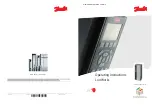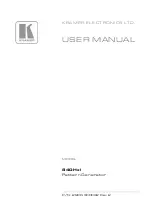
INVERTER
Safety Ground
–
+
to 4 cables and fuses
to 4 cables
6V
220AH
6V
220AH
6V
220AH
6V
220AH
6V
220AH
6V
220AH
+
–
+
–
+
–
+
–
+
–
+
–
Fuse
10,000 Watt AC Inverter by Wagan Tech
9
Battery Bank Diagram
The diagram below shows an inverter with up to four sets of connections to a battery bank
with recommended fuses for battery protection.
Fusing Requirements
NOTE: It is important that any high powered DC system has main battery fuses in all positive
(+) battery cables within one foot of the battery bank’s positive terminal. The fuses protect
against battery explosion if a battery cable accidentally shorts. The fuse amperage rating
must be sized to allow simultaneous operation of all the AC appliances to be powered,
allowing for momentary high start-up current requirements. Use the recommended ANL type
fuses and fuse holders (or equivalent) are recommended. See Appendix A for recommended
fuse ratings. They are readily available from marine supply dealers. Read and comply with
the warning below.
WARNING: EXPLODING BATTERIES CAN SPRAY MOLTEN LEAD, HOT SULFURIC ACID AND
PLASTIC FRAGMENTS. BATTERIES THAT ARE CHARGING OR UNDER HIGH DISCHARGE RATES
CAN PRODUCE EXPLOSIVE HYDROGEN GAS INTO THE SURROUNDING AREA. BE SAFE—
FUSE THE BATTERY BANK AND MAKE SURE THE BATTERY BANK LOCATION IS PROPERLY
VENTILATED.
DC Cable Gauge
Minimize cable losses by using the thickest insulated stranded copper wire available, and
the shortest practical length. Refer to Appendix A at the rear of this manual for suggested
cable gauge.
R
www.wagan.com






































